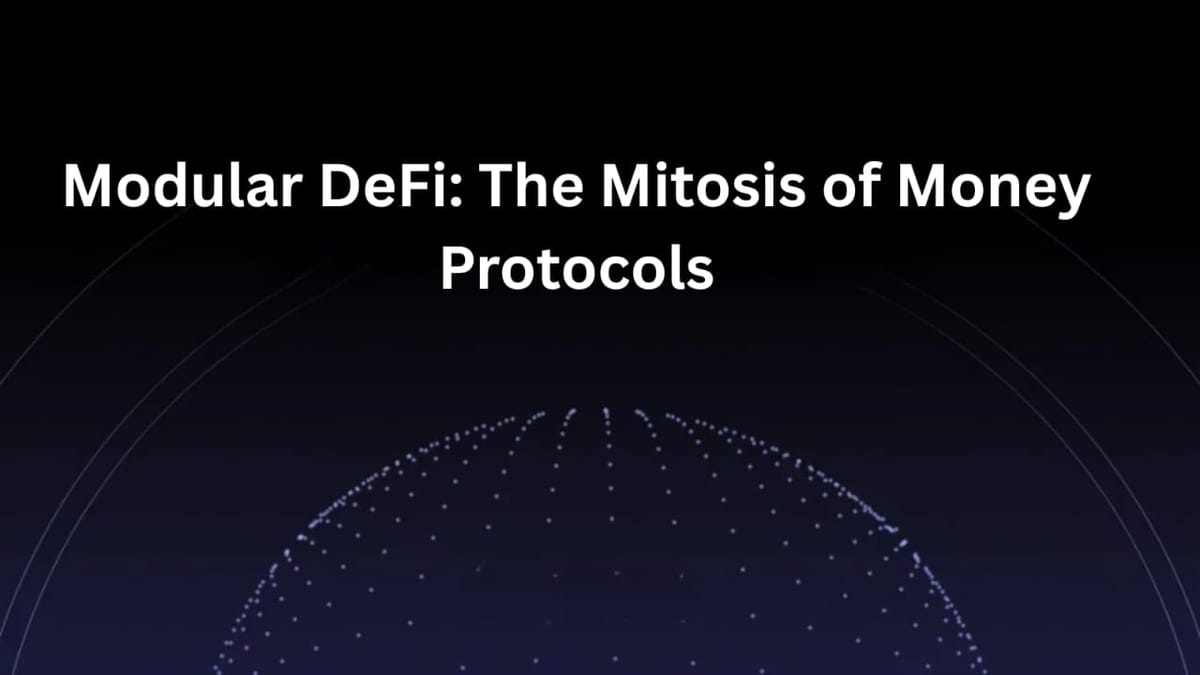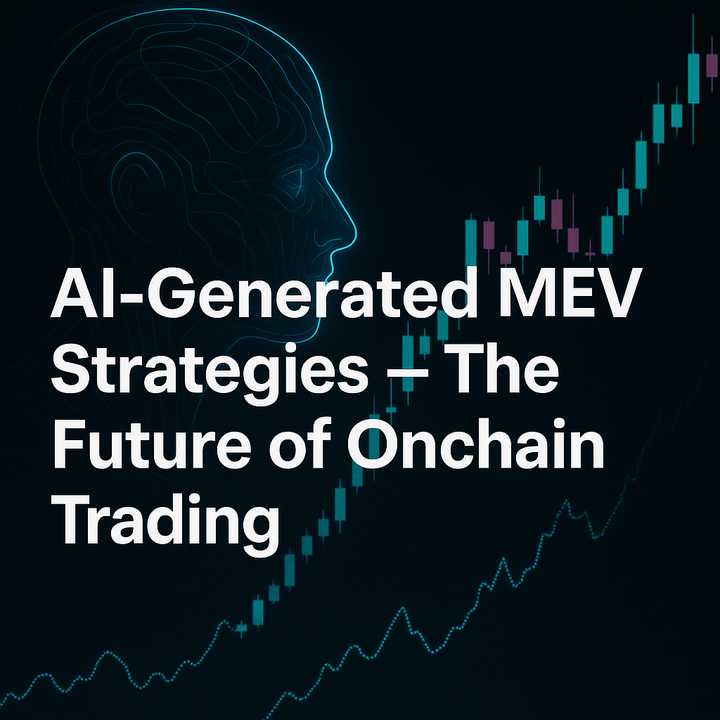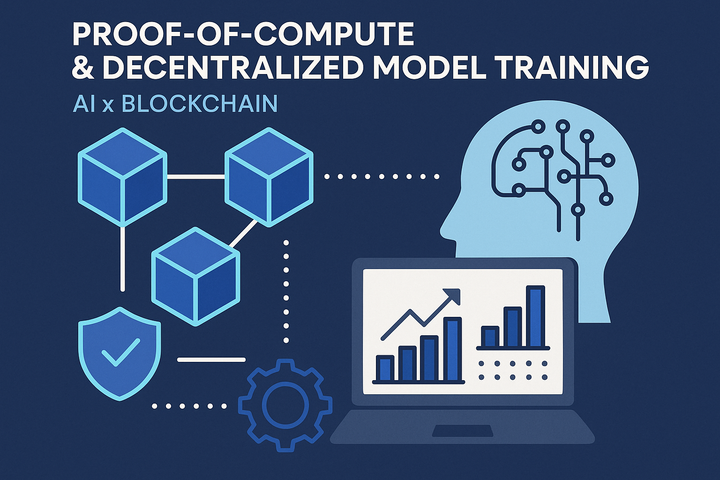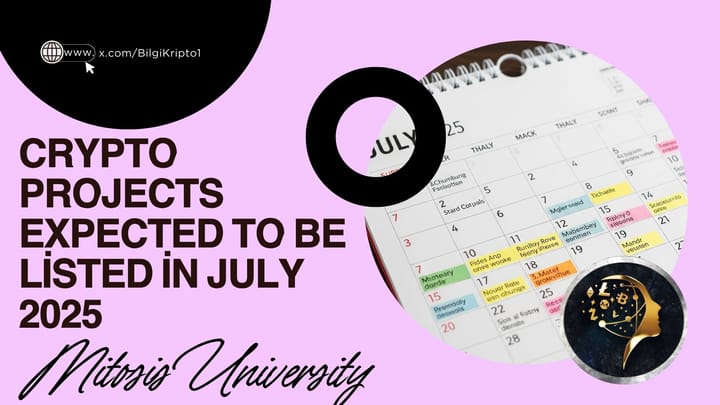Modular DeFi: The Mitosis of Money Protocols

Introduction
Decentralized Finance (DeFi) has emerged as one of the most transformative innovations in the financial sector, leveraging blockchain technology to create open, permissionless financial systems. As the DeFi landscape matures, we are witnessing a significant evolution in how these protocols are structured and interact with one another. This evolution can be likened to the biological process of mitosis, where cells divide and specialize, leading to greater efficiency and functionality. In this article, we will explore the concept of Modular DeFi, examining how protocols are breaking apart into specialized, composable units, and the implications of this transformation for the future of finance.
1. The Evolution of DeFi Protocols
1.1 Early Days of DeFi
The inception of DeFi can be traced back to projects like Bitcoin and Ethereum, which introduced the idea of programmable money. However, it was the launch of protocols like MakerDAO, Compound, and Uniswap that truly catalyzed the DeFi movement. These early protocols were monolithic in nature, offering specific functionalities such as lending, borrowing, or trading. Users had to navigate multiple platforms to access different services, leading to inefficiencies and a fragmented user experience.
1.2 The Rise of Composability
As the DeFi ecosystem grew, the concept of composability emerged as a key feature. Composability refers to the ability of different protocols to interact and integrate seamlessly with one another. This characteristic allows developers to build on existing protocols, creating new financial products and services without starting from scratch. For instance, a lending protocol can integrate with a decentralized exchange (DEX) to allow users to trade borrowed assets directly.
The composability of DeFi protocols has led to the creation of complex financial instruments and services, such as yield farming, liquidity mining, and synthetic assets. However, as these protocols became more interconnected, the limitations of monolithic designs became apparent.
1.3 The Need for Modularity
The limitations of monolithic protocols have prompted a shift towards modular designs. Modular DeFi refers to the practice of breaking down financial protocols into smaller, specialized components that can operate independently or in conjunction with one another. This approach allows for greater flexibility, innovation, and scalability.
In a modular DeFi ecosystem, each component can be developed, upgraded, and maintained independently, reducing the risk of systemic failures. Additionally, modularity enables developers to create tailored solutions for specific use cases, enhancing the overall user experience.
2. The Mitosis Analogy
2.1 Understanding Mitosis
Mitosis is a biological process where a single cell divides into two identical daughter cells. This process is essential for growth, development, and repair in living organisms. Similarly, the evolution of DeFi protocols into modular components can be viewed as a form of mitosis, where monolithic protocols are dividing into specialized units that can function independently while still being part of a larger ecosystem.
2.2 The Stages of Mitosis in DeFi
- Interphase: In the context of DeFi, interphase represents the initial stage where protocols are developed and gain traction. During this phase, developers focus on building core functionalities and attracting users.
- Prophase: As protocols mature, they begin to identify areas for improvement and specialization. This stage involves recognizing the need for modularity and planning the division of functionalities.
- Metaphase: In this stage, protocols start to implement changes, breaking down their monolithic structures into smaller, more manageable components. This may involve creating separate modules for lending, trading, and asset management.
- Anaphase: The actual division occurs in this phase, where the newly created modules are deployed and tested. Each module operates independently, allowing for specialized development and innovation.
- Telophase: Finally, the new modules are fully integrated into the DeFi ecosystem, allowing users to interact with them seamlessly. The ecosystem becomes more robust, with each module contributing to the overall functionality.
3. Key Components of Modular DeFi
1. Specialized Protocols
In a modular DeFi ecosystem, protocols can specialize in specific functions, such as lending, trading, or insurance. This specialization allows for more efficient operations and better user experiences. For example, Aave focuses on lending and borrowing, while Uniswap specializes in decentralized trading. By breaking down these functionalities, developers can create more innovative solutions tailored to user needs.
2. Composable Smart Contracts
Smart contracts are the backbone of DeFi protocols, enabling automated transactions and interactions. In a modular DeFi ecosystem, smart contracts can be designed to be composable, allowing them to interact with other contracts seamlessly. This composability enables developers to create complex financial products by combining different smart contracts, leading to innovative solutions like automated market makers (AMMs) and liquidity pools.
3. Interoperability
Interoperability is a crucial aspect of modular DeFi, allowing different protocols to communicate and interact with one another. This can be achieved through standardized interfaces and protocols, such as the Ethereum Improvement Proposals (EIPs) that define how smart contracts should interact. Interoperability enhances the user experience by enabling seamless transitions between different protocols and services.
4. Upgradability
One of the significant advantages of modular DeFi is the ability to upgrade individual components without affecting the entire ecosystem. This upgradability allows developers to implement new features, fix bugs, and improve security without requiring users to migrate to a new protocol. This flexibility is essential for maintaining the long-term viability of DeFi protocols.
4. Benefits of Modular DeFi
1. Enhanced Flexibility
Modular DeFi allows for greater flexibility in developing and deploying financial products. Developers can create specialized modules that cater to specific user needs, leading to a more diverse range of services. This flexibility also enables rapid experimentation and innovation, as new ideas can be tested without overhauling existing protocols.
2. Improved Security
By breaking down protocols into smaller components, the attack surface is reduced, making it more challenging for malicious actors to exploit vulnerabilities. Additionally, if a specific module is compromised, it can be isolated and fixed without affecting the entire ecosystem. This modular approach enhances the overall security of the DeFi landscape.
3. Scalability
Modular DeFi protocols can scale more effectively than monolithic designs. As user demand grows, developers can add new modules or upgrade existing ones without disrupting the entire system. This scalability is crucial for accommodating the increasing number of users and transactions in the DeFi space.
4. Encouraging Innovation
The modular approach fosters innovation by allowing developers to experiment with new ideas and concepts. With specialized modules, developers can focus on creating unique solutions that address specific challenges in the DeFi ecosystem. This culture of innovation is essential for the continued growth and evolution of decentralized finance.
5. Challenges of Modular DeFi
1. Complexity
While modularity offers numerous benefits, it also introduces complexity. Developers must navigate the intricacies of integrating multiple components, ensuring that they work seamlessly together. This complexity can lead to potential vulnerabilities and challenges in maintaining the overall system.
2. Standardization
For modular DeFi to thrive, there must be a level of standardization in how protocols and components interact. Without standardized interfaces and protocols, interoperability can become a significant challenge, hindering the seamless integration of different modules.
3. Governance
As protocols become more modular, governance becomes more complex. Decentralized governance models must adapt to accommodate the diverse range of components and their interactions. Ensuring that all stakeholders have a voice in decision-making processes is crucial for maintaining trust and collaboration within the ecosystem.
6. Case Studies of Modular DeFi Protocols
1. Yearn Finance
Yearn Finance is a prime example of a modular DeFi protocol. It offers a suite of products designed to optimize yield farming strategies for users. Each product, such as yVaults and yEarn, operates as a separate module, allowing users to choose the best strategy for their needs. This modular approach enables Yearn to adapt quickly to changing market conditions and user preferences.
2. SushiSwap
SushiSwap started as a fork of Uniswap but has since evolved into a modular DeFi ecosystem. It offers various products, including lending, staking, and yield farming, each functioning as a separate module. This modularity allows SushiSwap to innovate rapidly and expand its offerings while maintaining a cohesive user experience.
3. Aave
Aave is a decentralized lending protocol that exemplifies modularity in DeFi. It allows users to lend and borrow a wide range of assets, with each asset represented as a separate module. This modular design enables Aave to support various assets and adapt to changing market dynamics, providing users with a flexible and efficient lending experience.
7. The Future of Modular DeFi
As the DeFi landscape continues to evolve, the trend towards modularity is likely to accelerate. The benefits of enhanced flexibility, security, and scalability will drive more protocols to adopt modular designs. Additionally, as the demand for innovative financial products grows, developers will increasingly seek to create specialized modules that cater to specific user needs.
7.1 Potential Developments
- Increased Interoperability: The development of standardized protocols and interfaces will enhance interoperability between different modular DeFi components, creating a more cohesive ecosystem.
- Cross-Chain Solutions: As the DeFi space expands beyond Ethereum, cross-chain solutions will become increasingly important. Modular DeFi protocols will need to adapt to work seamlessly across multiple blockchain networks.
- Decentralized Governance Models: The evolution of governance models will be crucial for managing the complexities of modular DeFi. Decentralized autonomous organizations (DAOs) may play a significant role in ensuring that all stakeholders have a voice in decision-making processes.
- Integration with Traditional Finance: As modular DeFi protocols mature, we may see increased integration with traditional financial systems. This integration could lead to new opportunities for collaboration and innovation, bridging the gap between decentralized and centralized finance.
Conclusion
Modular DeFi represents a significant evolution in the decentralized finance landscape, akin to the biological process of mitosis. By breaking down monolithic protocols into specialized, composable units, the DeFi ecosystem is becoming more flexible, secure, and innovative. While challenges remain, the benefits of modularity are driving the future of DeFi, paving the way for a more efficient and user-centric financial system. As we continue to explore the potential of Modular DeFi, it is essential to embrace the principles of collaboration, standardization, and governance to ensure a thriving ecosystem for all participants.
Resources
- DeFi Pulse - A comprehensive resource for tracking DeFi protocols and their performance.
- Ethereum Foundation - The official website for Ethereum, providing resources and information on the Ethereum blockchain.
- Yearn Finance - The official website for Yearn Finance, detailing its suite of yield optimization products.
- Aave - The official website for Aave, a decentralized lending protocol.
- SushiSwap - The official website for SushiSwap, a decentralized exchange and DeFi ecosystem.



Comments ()